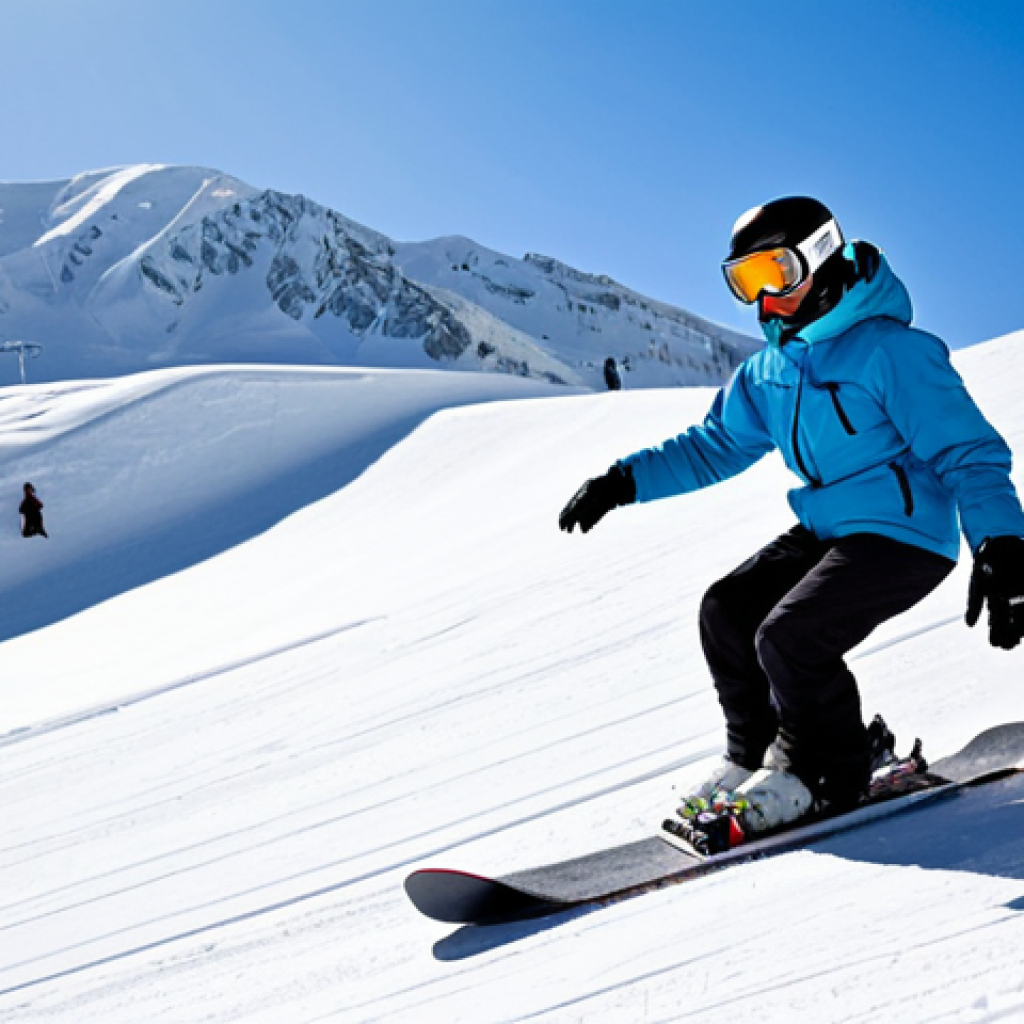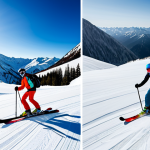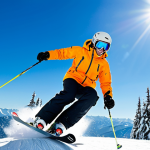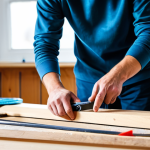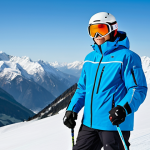Choosing the right snowboard deck can feel overwhelming, like navigating a blizzard in ski goggles. There are so many options, from different shapes and sizes to flex ratings and construction materials.
It’s enough to make any snowboarder, from beginner to expert, feel a little lost. As someone who’s spent countless hours on the slopes, experimenting with various decks, I can tell you firsthand that the right board can make all the difference in your riding experience.
A deck that complements your style and skill level will have you carving with confidence and floating through powder like a dream. But how do you find that perfect match?
Let’s delve into the key factors to consider. Let’s get to the bottom of it and find your perfect board!
Alright, let’s dive into choosing the right snowboard deck!
Decoding Deck Length: Finding Your Sweet Spot
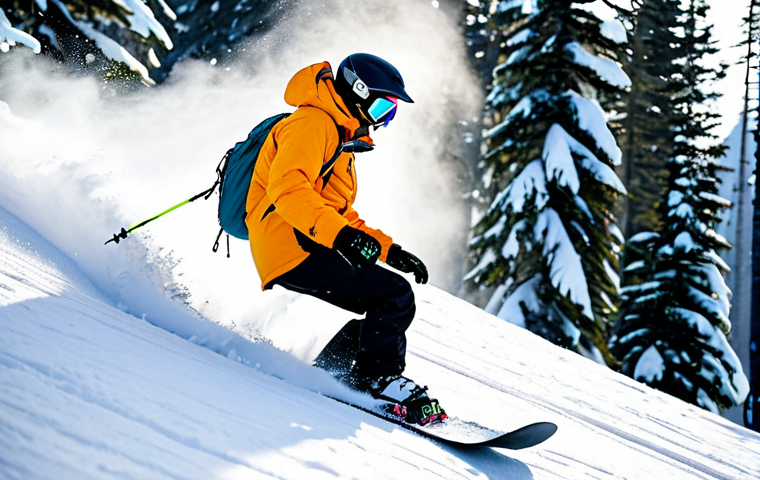
Choosing the correct snowboard length is critical for maximizing control and enjoyment. It’s not just about height; weight, riding style, and terrain all play crucial roles.
A general rule is that the board’s length should reach somewhere between your chin and nose when stood on its tail. However, this is merely a starting point.
Heavier riders might need a slightly longer board for increased stability, while lighter riders may prefer a shorter board for easier maneuverability.
Personally, after years of riding, I’ve found that slightly shorter boards are great for park riding and tricks, allowing for quicker spins and more forgiving landings.
On the other hand, longer boards excel in powder and offer more stability at high speeds on groomers. Don’t be afraid to demo different sizes. Most snowboard shops will let you try out different sizes.
I highly recommend doing this so you can feel it for yourself.
Riding Style Matters
Your riding style significantly impacts the ideal board length. If you’re primarily a park rider, focusing on jumps, rails, and boxes, a shorter board will be your friend.
The reduced swing weight makes rotations easier, and shorter boards are generally more forgiving on landings. Freeriders, who prefer carving down groomed runs and exploring off-piste terrain, often opt for slightly longer boards.
The added length provides stability at higher speeds and better float in powder. All-mountain riders, who enjoy a mix of everything, typically fall somewhere in between, selecting a mid-length board that offers a balance of maneuverability and stability.
Terrain Considerations
The type of terrain you frequent also influences board length. If you primarily ride in areas with deep powder, a longer board with a wider waist will provide the necessary float to stay on top of the snow.
Shorter boards can get bogged down in powder, making for a tiring and frustrating experience. For icy conditions, a slightly longer board with good edge hold can provide the stability and control needed to navigate challenging terrain.
And if your local mountain is known for its perfectly groomed runs, a mid-length board will allow you to carve with precision and speed.
Understanding Snowboard Shapes: Camber, Rocker, and Hybrids
The shape of a snowboard profoundly affects its performance characteristics. The two primary profiles are camber and rocker, each offering distinct advantages.
Camber boards feature a slight arch in the middle, providing excellent edge hold, pop, and stability at high speeds. They are ideal for experienced riders who enjoy carving and need precise control.
Rocker boards, on the other hand, have a reversed camber, with the middle of the board raised off the snow. This design makes them more forgiving, easier to turn, and better suited for powder riding.
Hybrid boards combine elements of both camber and rocker, offering a versatile option that balances edge hold, pop, and float.
Camber: Precision and Pop
Camber boards are the workhorses of the snowboarding world. Their arched profile distributes weight evenly across the board, resulting in enhanced edge hold and powerful pop.
When carving, the camber profile allows you to engage the entire edge of the board, providing maximum control and stability. The downside of camber boards is that they can be less forgiving than rocker boards, requiring more precise technique to avoid catching an edge.
Rocker: Float and Forgiveness
Rocker boards are designed for effortless turns and exceptional float in powder. The raised middle section allows the board to plane over the snow, preventing it from sinking in deep conditions.
Rocker boards are also more forgiving than camber boards, making them a great choice for beginners or riders who prefer a more relaxed style. The trade-off is that rocker boards typically offer less edge hold and pop than camber boards.
Hybrid: The Best of Both Worlds
Hybrid boards attempt to combine the advantages of camber and rocker, offering a versatile option for all-mountain riding. These boards typically feature camber underfoot for edge hold and pop, with rocker in the tip and tail for float and forgiveness.
The specific combination of camber and rocker varies from board to board, so it’s essential to research and choose a hybrid profile that suits your riding style and preferences.
Flex Rating: Dialing in the Right Feel
A snowboard’s flex rating determines its stiffness, impacting how the board responds to your input. A softer flex is more forgiving and easier to turn, making it suitable for beginners and park riders.
A stiffer flex provides more stability at high speeds and better edge hold, ideal for experienced riders and freeriders. Flex ratings typically range from 1 to 10, with 1 being the softest and 10 being the stiffest.
Choosing the right flex depends on your skill level, riding style, and the type of terrain you prefer.
Soft Flex: Forgiving and Playful
Soft flex snowboards are ideal for beginners and park riders. The forgiving nature of a soft flex makes it easier to initiate turns and absorb bumps, reducing the risk of catching an edge.
Soft flex boards are also more playful, allowing you to easily butter, press, and jib. However, soft flex boards can become unstable at high speeds and may not offer enough edge hold for icy conditions.
Medium Flex: Versatile and Balanced
Medium flex snowboards offer a balance of forgiveness and performance. They are versatile enough to handle a variety of terrain and riding styles, making them a great choice for all-mountain riders.
Medium flex boards provide enough stability for carving and riding at moderate speeds, while still being forgiving enough to prevent catching an edge.
Stiff Flex: Powerful and Precise
Stiff flex snowboards are designed for experienced riders who demand maximum performance. The stiffness of the board provides exceptional edge hold, stability at high speeds, and powerful pop.
Stiff flex boards are ideal for carving, freeriding, and riding in challenging conditions. However, stiff flex boards require more precise technique and can be less forgiving than softer flex boards.
Core Materials and Construction: What’s Underneath Matters
The materials used in a snowboard’s core and construction significantly affect its weight, durability, and performance characteristics. Common core materials include wood, foam, and composites.
Wood cores provide a natural feel, excellent pop, and durability. Foam cores are lightweight and damp, absorbing vibrations for a smoother ride. Composite cores combine the advantages of both wood and foam, offering a balance of performance and weight.
Wood Cores: Natural Feel and Durability
Wood cores are the most common type of core material used in snowboards. They provide a natural feel, excellent pop, and durability. Different types of wood, such as poplar, birch, and bamboo, offer varying degrees of stiffness and weight.
Softer woods, like poplar, are more forgiving and provide a smoother ride. Harder woods, like birch and bamboo, are stiffer and provide more pop and stability.
Foam Cores: Lightweight and Damp
Foam cores are lightweight and damp, absorbing vibrations for a smoother ride. They are often used in entry-level snowboards to reduce weight and cost.
However, foam cores typically lack the pop and durability of wood cores.
Composite Cores: Balancing Performance and Weight
Composite cores combine the advantages of both wood and foam, offering a balance of performance and weight. They often feature a wood core reinforced with composite materials, such as carbon fiber or fiberglass.
Composite cores provide excellent pop, stability, and dampening, making them a popular choice for high-performance snowboards.
Base Materials: Glide and Durability
The base of a snowboard is the part that comes into contact with the snow, so its material and construction significantly affect its glide and durability.
There are two main types of base materials: extruded and sintered. Extruded bases are made from melted polyethylene pellets and are relatively inexpensive and easy to repair.
However, they are less porous than sintered bases, resulting in slower glide. Sintered bases are made from compressed polyethylene powder and are more porous, allowing them to absorb wax better and glide faster.
However, they are more expensive and require more maintenance.
Extruded Bases: Affordable and Low-Maintenance
Extruded bases are a cost-effective option for entry-level snowboards. They are relatively easy to repair and require minimal maintenance. However, they are less porous than sintered bases, resulting in slower glide.
Extruded bases are a good choice for riders who prioritize affordability and low maintenance over top-end performance.
Sintered Bases: Fast and High-Performance
Sintered bases are the preferred choice for high-performance snowboards. Their porous construction allows them to absorb wax better, resulting in faster glide.
Sintered bases are more expensive than extruded bases and require more maintenance, but the increased performance is worth it for experienced riders who prioritize speed and responsiveness.
| Feature | Extruded Base | Sintered Base |
|---|---|---|
| Material | Melted Polyethylene Pellets | Compressed Polyethylene Powder |
| Glide | Slower | Faster |
| Maintenance | Low | High |
| Cost | Lower | Higher |
| Durability | Good | Better |
Edge Tech: Maximizing Grip and Control
The edges of a snowboard are critical for carving and maintaining control, especially on icy conditions. Many snowboards feature enhanced edge technology, such as Magne-Traction or Grip Tech, which improve edge hold and stability.
These technologies use wavy or serrated edges to create multiple contact points with the snow, increasing grip and preventing slippage.
Magne-Traction: Serrated Edge Technology
Magne-Traction is a serrated edge technology developed by Lib Tech. It features seven strategically placed bumps along the edge of the board, creating multiple contact points with the snow.
This increased contact improves edge hold and control, especially on icy conditions.
Grip Tech: Multiple Contact Points
Grip Tech, used by Arbor, utilizes a similar concept to Magne-Traction. It features additional contact points along the edge of the board, providing enhanced grip and control.
The specific design and placement of the contact points vary depending on the board model. Choosing the right snowboard deck is a personal journey. Consider your skill level, riding style, and the type of terrain you frequent.
Don’t be afraid to experiment with different shapes, sizes, and flex ratings to find the perfect match. With the right deck, you’ll be carving with confidence and enjoying every moment on the slopes.
Happy riding!
Wrapping Up
Finding the perfect snowboard deck is a personal quest, much like finding the right pair of jeans. Take your time, demo different boards if possible, and don’t be afraid to ask for advice at your local snowboard shop. With the right deck beneath your feet, you’ll be carving, floating, and jibbing your way to countless unforgettable days on the mountain. So, gear up and get out there – the slopes are calling!
Handy Tips to Keep in Mind
1. Check Snow Conditions: Before buying, research typical snow conditions at your local resort. Icy mornings versus deep powder days can drastically change your needs.
2. Consider Your Boot Size: Ensure your snowboard width accommodates your boot size to avoid heel and toe drag. As a rule of thumb, if you wear over US men’s size 11, consider a wider board.
3. Read Reviews: Check out online reviews from riders with similar styles and ability levels. Real-world experiences can offer invaluable insights beyond marketing hype.
4. Think About Your Bindings: Your bindings play a crucial role in how well you connect with your board. Make sure they are compatible with your riding style and the board’s flex.
5. Look for Sales and End-of-Season Deals: You can often snag great deals on snowboards at the end of the season or during holiday sales. Don’t be afraid to shop around for the best price.
Key Takeaways
Length: Base your board length on weight, riding style, and terrain.
Shape: Choose between camber, rocker, or hybrid profiles based on your skill level and preferred riding conditions.
Flex: Opt for softer flex for park and beginner riders, medium flex for all-mountain, and stiffer flex for advanced freeriders.
Materials: Understand the impact of core and base materials on performance and durability.
Edges: Consider edge technology for enhanced grip, especially in icy conditions.
Frequently Asked Questions (FAQ) 📖
Q: I’m a beginner snowboarder. What kind of board should I be looking for?
A: Oh man, starting out can be a bit intimidating, but it’s also super exciting! For a beginner, you’ll definitely want to look for a softer, more forgiving board.
A softer flex will make it easier to control and prevent those nasty catching edges. Think about a board with a rocker or flat profile, which helps with stability and turning.
Avoid anything too stiff or aggressive; those are better for more experienced riders. Honestly, when I started, I went with a super mellow, all-mountain board, and it was a lifesaver.
It helped me get the hang of the basics without feeling like I was wrestling a wild animal. Plus, consider renting a few different types before committing to buying!
Q: What’s the deal with all the different snowboard shapes?
A: re they just for looks, or do they actually matter? A2: Shape definitely matters! It’s not just about looking cool (though a sick graphic doesn’t hurt, right?).
Different shapes are designed for different riding styles and terrain. For example, a directional board with a setback stance is great for carving and riding powder, because it helps you stay afloat.
A true twin board, on the other hand, is symmetrical and perfect for riding switch in the park, because you can land either forwards or backwards. There are also directional twins, which offer a bit of both worlds.
I remember one time I took a directional board into the terrain park thinking I could ride switch easily. Big mistake! I was all over the place.
Knowing your preferred terrain and riding style is key to picking the right shape.
Q: How do I know what size snowboard to get? I’m totally lost!
A: Size is crucial! Too short, and you’ll feel unstable. Too long, and you’ll have trouble turning.
Generally, your weight is the most important factor. Most snowboard manufacturers have size charts based on weight, so start there. Height can also play a role, especially if you’re on the shorter or taller side.
When I’m helping someone pick a board at the shop, I usually have them stand next to it. Ideally, the board should come up somewhere between your chin and your nose.
Also, consider your riding style. If you’re mostly into park riding, you might want to go a little shorter for easier spins and maneuvers. If you’re more into bombing hills and riding powder, a longer board will give you more stability and float.
Ultimately, it’s all about finding that sweet spot where you feel comfortable and in control.
📚 References
Wikipedia Encyclopedia
구글 검색 결과
구글 검색 결과
구글 검색 결과
구글 검색 결과
구글 검색 결과
